How did it all start? The space in Regent Arcade that The Little Machine (TLM) occupies needed very little doing to it when we moved in at the start of 2023. One thing it did need was a wall to divide the space into a gallery at the front, and a small storage space at the back. Eleen Deprez, TLM Co-Director, bought four panels of 2700×1200 Gyprock plasterboard to make the wall. But, due to a miscalculation, it turned out that the wall required only three of those panels in its construction. One sheet of Gyprock was left over, ending up in the new storage space.
For some two years I had been trying to arrange to meet with the artist George Popperwell, to no avail. But Eleen and I managed it at the beginning of February this year, meeting the reclusive Popperwell at a Mt Barker café. We talked over many things, including TLM. Idly, Eleen mentioned the panel of Gyprock, and proposed that she might invite artists to do something with it. What, after all, could we otherwise do with it? Artists could send her instructions for making an artwork out of this piece of plasterboard, and she would make them all herself. The artists would need to transmit the idea of the work in words, diagrams or pictures, and Eleen would be charged with interpreting and executing these directions. Perhaps the process would be a little like Lars von Trier’s The Five Obstructions, or Channel 4’s Taskmaster. The idea, like so many others, could have drifted away, but Popperwell paused, his interest pricked a little – and we took that as encouragement.
Ideas have multiple points of genesis. Eleen was taught at KASK (Koninklijke Academie voor Schone Kunsten) in Ghent, Belgium, by Geert Vercaemer, a figure whose puckish energy and critical eye sustained a generation of Flemish art students, much as Popperwell’s intelligence and enthusiasm encouraged a generation of artists at the South Australian School of Art. Each year Vercaemer gifted his first-year students an object and charged them to make an artwork from it. One year, disastrously, Vercaemer gave each of his students a live mouse. Another year, each student got a broom. Eleen, though, recalls her year receiving a rather more quotidian gift: small square mdf panels.
This exhibition also could hardly exist without a history of art that sanctions ideas as artworks, allowing them to be expressed via instructions and manifested in different instances, and sometimes in rather different forms. The Conceptualism of the late 1960s and the ’70s is crucial here. One instance is Jan Dibbets’ All Shadows That Occurred to Me in ………… Are Marked With Tape (1969), in which all the shadows in the gallery the work is installed are outlined with masking tape, sometimes by the artist himself, and sometimes by others. But one could also look to earlier exemplars. Stephen Atkinson draws my attention to László Moholy-Nagy’s “telephone paintings”, made in 1923, by phoning-in instructions to a factory, so the artist claimed.1 And there is Hans Ulrich Obrist’s do it, which began in 1993, and takes the form of a compendium of “scores” – instructions by artists – which anyone may “perform”. Do it has taken place at locations around the globe since then, including, in 2015, do it [adelaide], at the Anne & Gordon Samstag Museum of Art. This included scores by Australian artists, including Sarah crowEST, Johnnie Dady, and Nicholas Folland, who have also contributed to this exhibition.
This talk of art as concepts and ideas might seem to bring with it a fuzzy kind of Platonism, suggesting that artworks somehow exist beyond the physical world, manifesting now and then in perceptually accessible form. That kind of thinking was anathema to many of the conceptualists. But where they might have preferred to appeal to Wittgenstein to reject that kind of thinking, I find Nelson Goodman’s Languages of Art more useful in this context.2 Goodman, a nominalist, developed distinctions between different kinds of artforms without invoking Platonist ontology. We ordinarily think of visual artworks as autographic – an artwork is autographic, Goodman says, just when “even the most exact duplication of it does not thereby count as genuine”. Making an exact copy of a painting or sculpture by artist X, for instance, does not make the copy a work by artist X. But that is not so for the works in this exhibition. They are, or seem to be, allographic: like a performance of a symphony or play, if the right instructions are followed, a genuine instance of the artwork will be produced. The instructions may be followed poorly, and the artist who drew them up may even disapprove of the result – but if the instructions are followed then the product is an instance of that artwork nonetheless. Goodman also makes a useful distinction between one-stage and two-stage artforms. Paintings, for instance, are usually one-stage: once the artist applies the final brushstroke, it is at once accessible to those who wish to fully appreciate it. A play or musical composition is two-stage. Once the playwright or composer has finished it, it is complete, but it requires a performance if it is to be properly accessible to an audience. The works in this exhibition are two-stage. Once the artist has done their work (writing the instructions), it must be “performed”: the instructions, like a score or script, must be followed for it to be accessed by the audience – which is also to say, for it to be properly appreciated.
This might seem rather abstract, but assuming that Goodman’s approach is right, it has important implications. First, the artworks in this exhibition have an existence independent of the curator’s fabrication of them, in much the same way that Beethoven’s Fifth Symphony or Macbeth distinct existence even when they are not being performed (or performed badly – one could still think the Fifth is a fantastic piece of music even when you’re listening to a dreadful performance of it). Second, all scores and scripts provide freedom for the performer in certain senses, and this is often the case here too. Popperwell even directs the fabricator to “play” with the configuration of the elements of his work. Third, the artists’ instructions, so far as they are meaningful at all, must have some linguistic character. Nicholas Folland, we will see, tests this principle close to breaking point by presenting his instruction in pictorial form. The pictorial form of his instructions might well stymie one’s ability to carry them out and assess their fulfilment. This is because it is arguable whether pictures can convey what logicians call propositional content (“X is so and so, or is not so and so”) – and instructions depend on propositional content. “Do this”, instructions tell us, and “this” can always be understood as expressing a proposition: “Do it so that X is so and so, or is not so and so”. But a picture considered simply as a picture cannot tell us any of these things. It shows us an image, but does not tell us how to use it as an instruction. A picture requires some kind of linguistic context, directions for use, if it is to operate as an instruction. Lastly, the allographic and two-stage character of these works gives agency to the fabricator as well as the artist. The fabricator, of course, may carry out these instructions more or less well, and more or less fulfill the intentions of the artist. But it might also be that in carrying out some of these instructions at least, the fabricator might have an artistic agency akin to that of a musician or actor.
That last point may sound rather high-minded. Observing the works as they’ve been fabricated in the build-up to this exhibition, the role of the fabricator feels rather different. What one sees in the finished works are traces, more or less legible, of psychodramas between artist and fabricator. Curator cum fabricator, I should say, for it is significant – key, in fact – that the curator has carried out the fabrication of the works seen in the gallery. The curator has set a task for the artist (to set instructions), and the artist has in turn set a task for the curator (to follow them). Others, we hope, will also follow these instructions – and can buy a small sheet of plasterboard from the gallery for this purpose – but they do so voluntarily. The curator, in keeping with the agreement they have struck with the artist, must follow these instructions. So, what are the psychodramas that emerge from this pact between curator and artist?
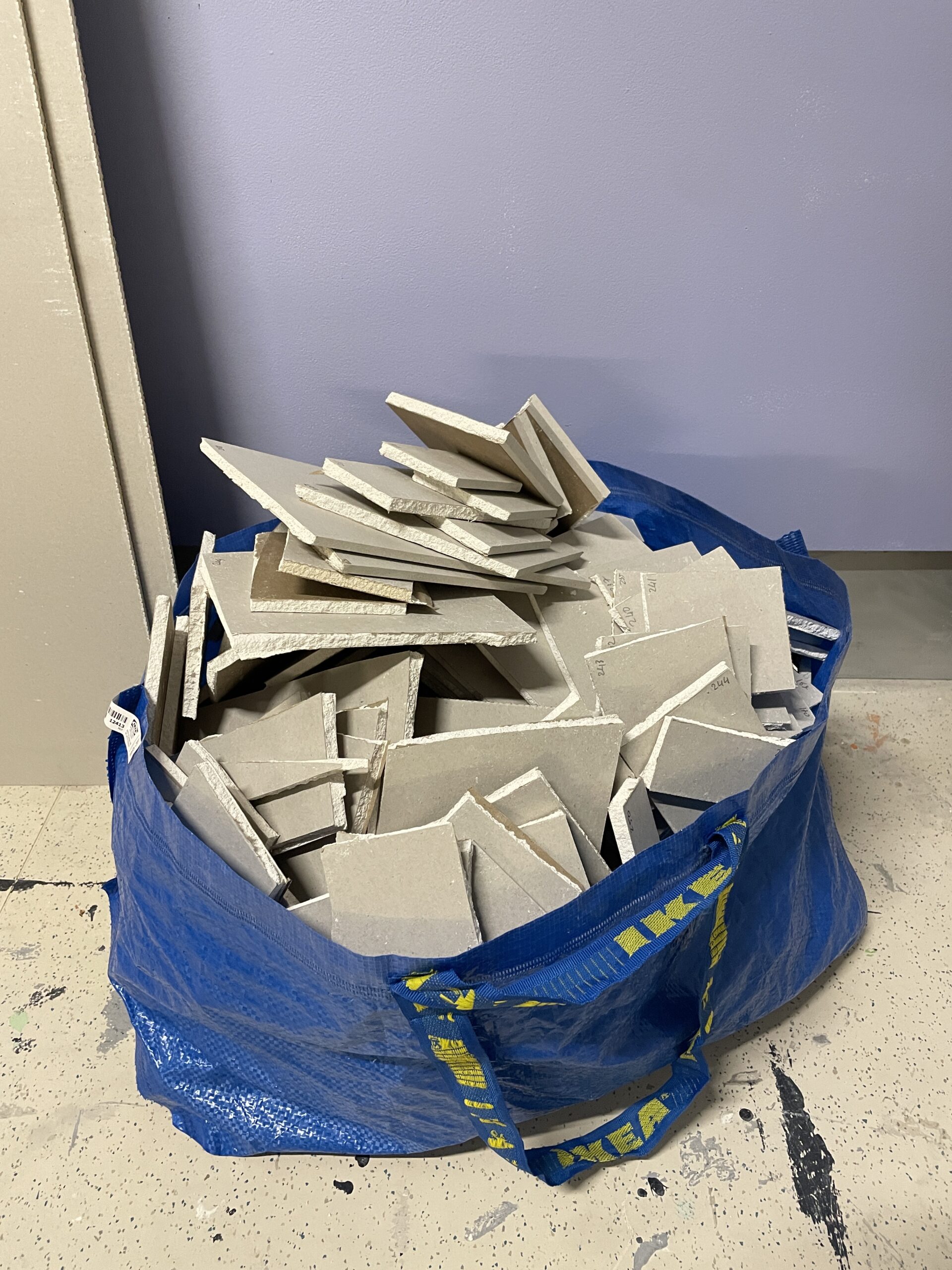
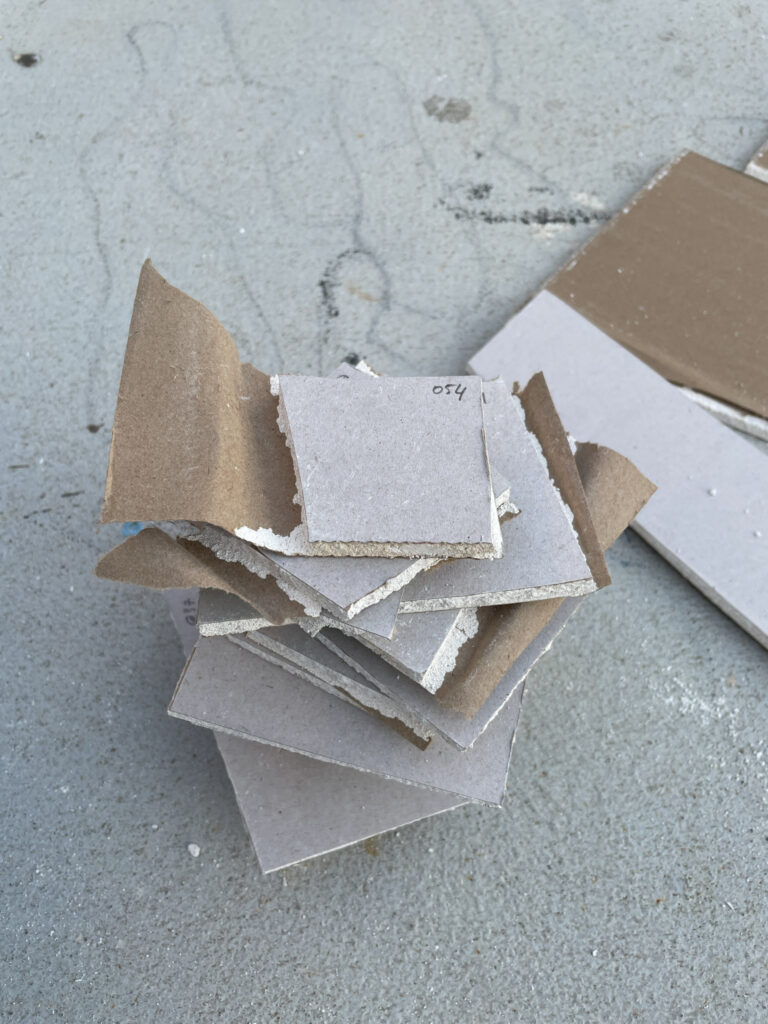
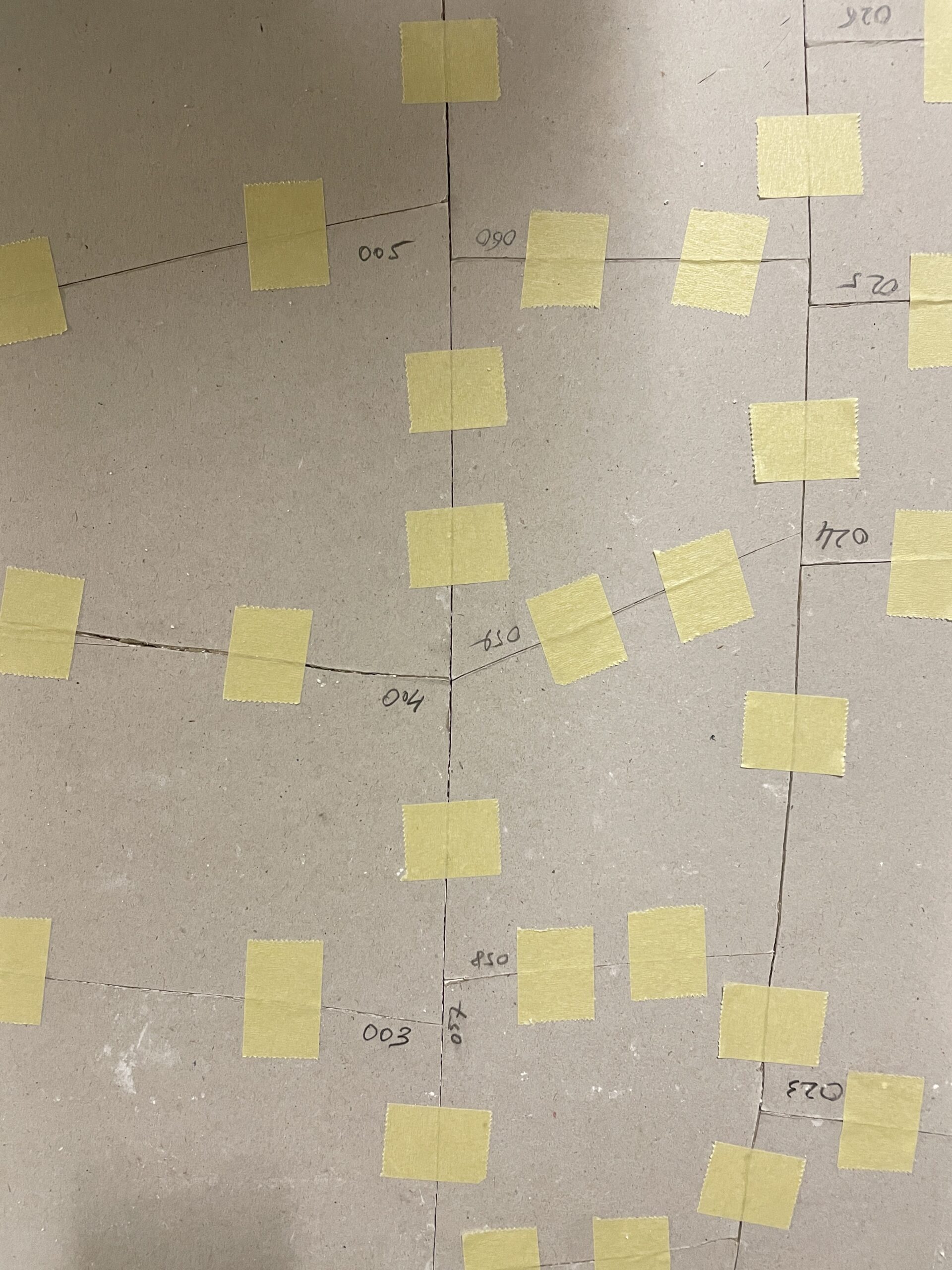
Johnnie Dady instructs that his plasterboard be cut into “some 250ish pieces”. These are to be reassembled, taped back together “stitch like”, with a direction to lean the resulting object against the wall. He encourages and taunts the curator: “you can do it/ the thing/ I suggest/ using the crane/grapple in the arcade/ will you do what I say/ will you fail to do it right/ I do hope so”. It has not proved possible to follow every one of the artist’s instructions. The board had to be reassembled off-site for logistical reasons (like most of the works in the exhibition, this was fabricated at the South Australian School of Art’s studios in UniSA’s Dorrit Black Building. And there is no crane or grapple in the Regent Arcade. Still, Dady’s desires are largely realised in the cut and reassembled plasterboard. Writing prior to the work’s installation in the gallery, it is hard to see how the delicately reassembled plasterboard can possibly lean against a wall without breaking and collapsing. But perhaps this too will accord with Dady’s instructions: “will you fail to do it right/ I do hope so”.
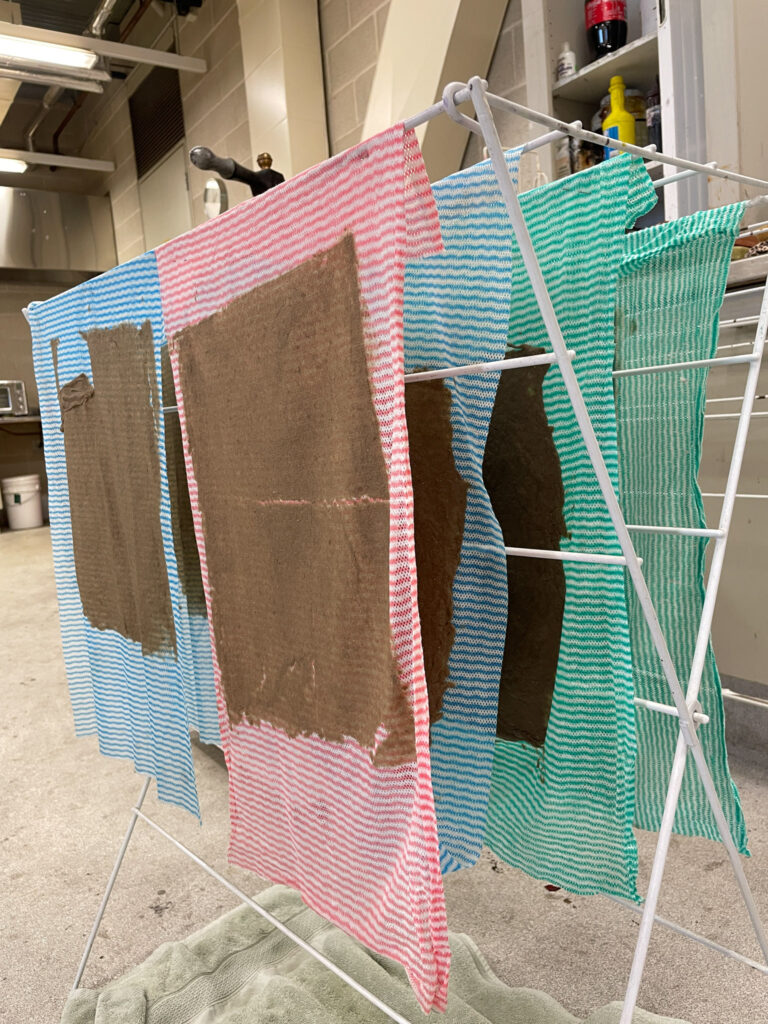

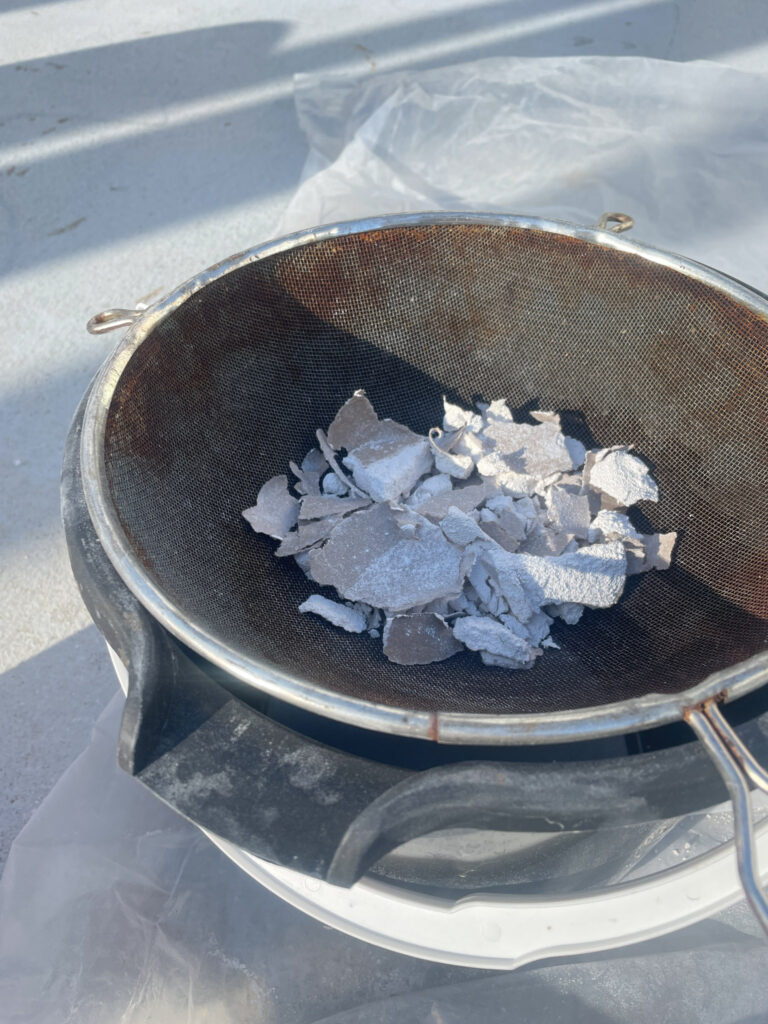
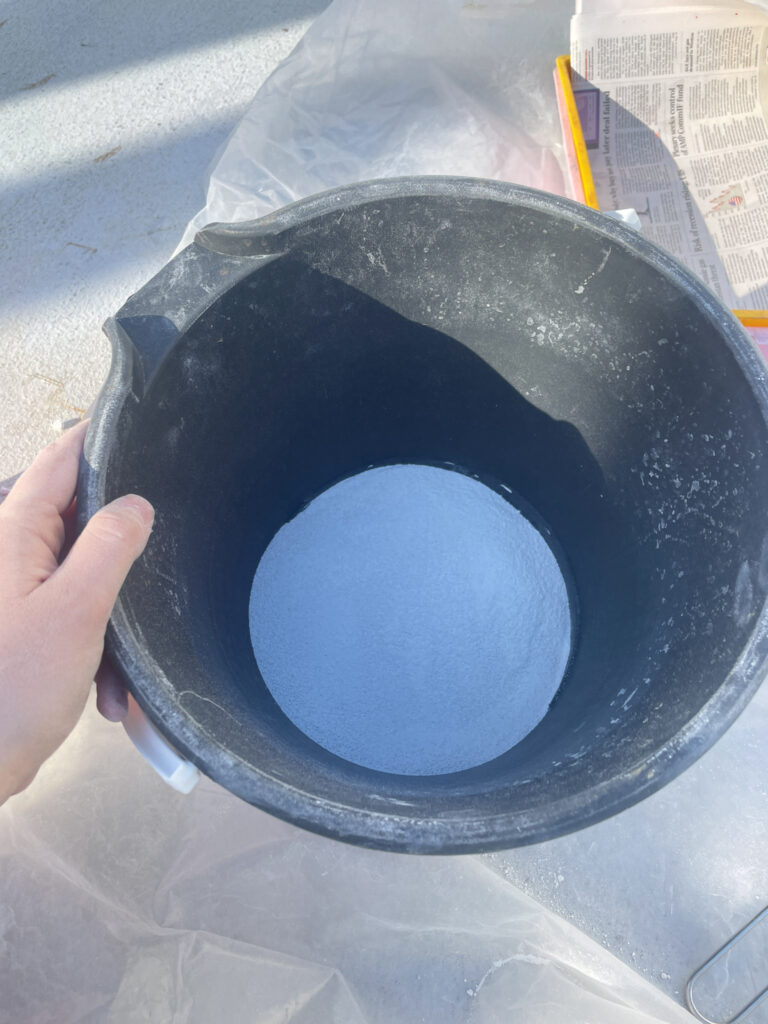
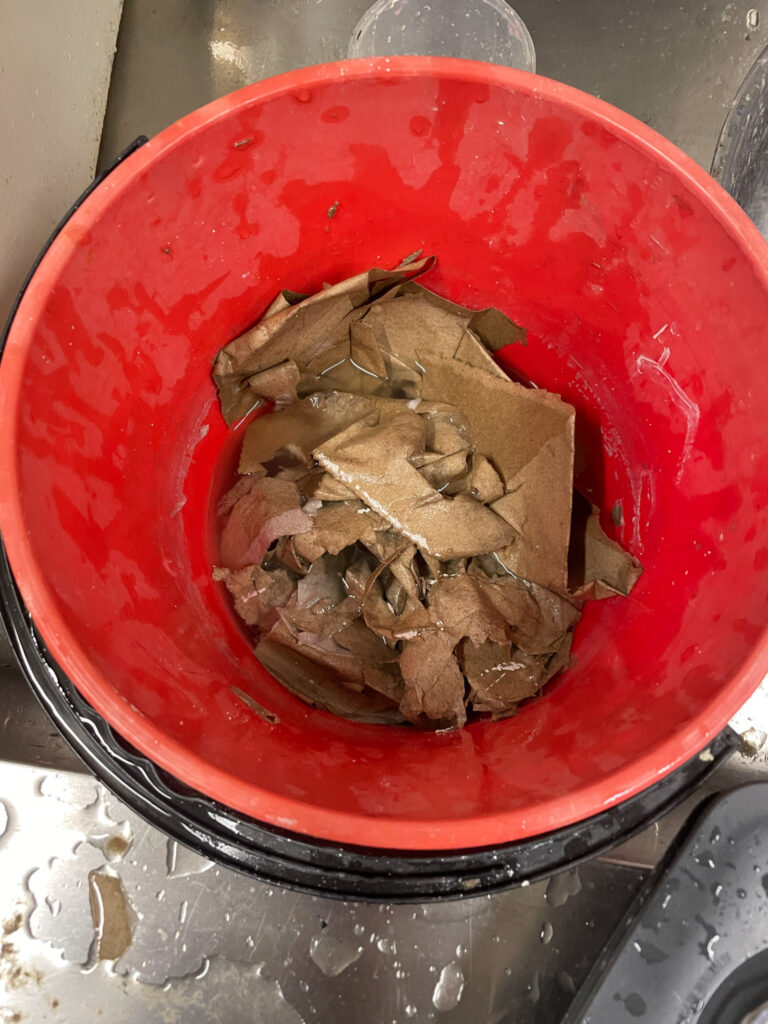
Sarah Jones brings a different kind of awareness of materials, based around her rigorous concern with process, recycling and the environment. For the past six years, she has resolved to no longer purchase or borrow new materials in her art practice, instead finding ways to use, repurpose or recycle those that are available to her. Rather than making something with the board, Jones wanted to create a potential for the board in the future. She suggested to Eleen that the board be turned back into its original components, plaster and paper, so that it might be available for new, diverse and creative purposes in the future. The plasterboard was thus broken up, smashed and crushed with a hammer into a grainy dust, and baked in an oven to remove water content, turning it into plaster of Paris. The paper that covers the plasterboard was peeled and scraped off, mashed to a pulp, and reconstituted anew as sheets of paper. This proved enormously demanding and time consuming – it turns out that a panel of plasterboard comprises a surprisingly large amount of both plaster and paper. Eleen enlisted help from artist Shirley Wu, but even then, only part of the board has been processed as Jones directed. It will be apparent that Jones’ self-effacement as an artist has an ethical character, and her elegant gesture shares in this quality.
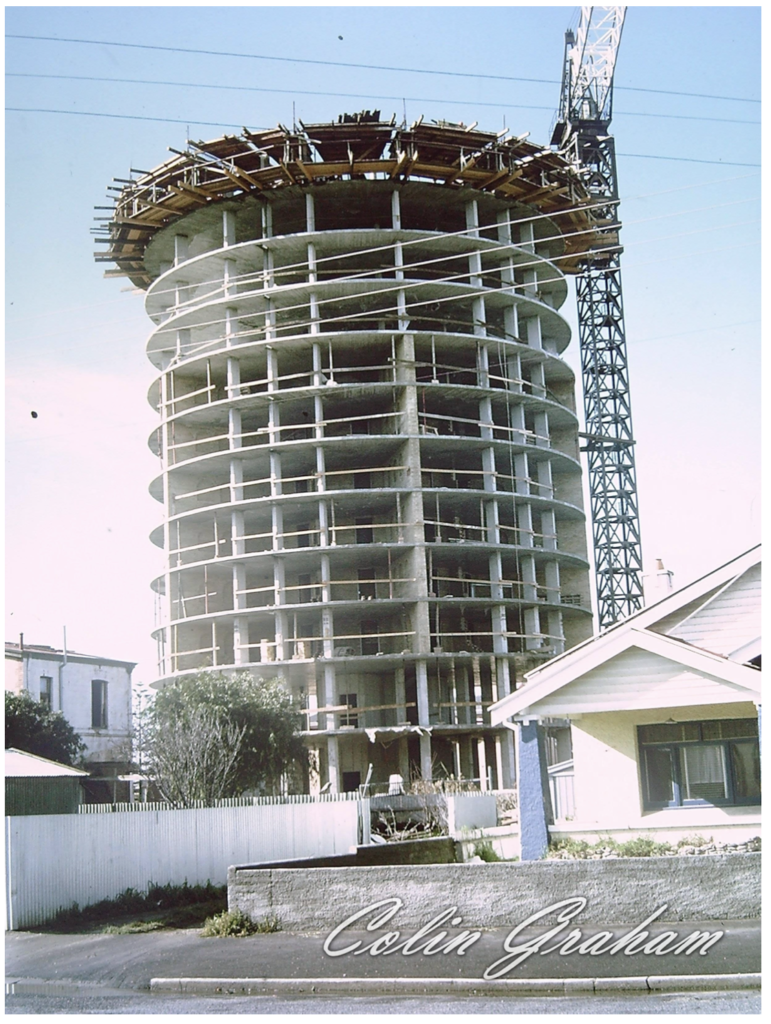
Nicholas Folland sends a picture, with no further direction or suggestion. “I’m surrendering to you”, he writes. The work is titled Thirteen. The picture shows an image of Adelaide’s landmark revolving restaurant under construction, circa 1980. It is a 12- or 13-story concrete cylinder, standing incomplete, like a modest, suburban version of Bruegel’s Tower of Babel. Perhaps this has been the most difficult instruction to respond to, if it is an instruction at all. Eleen sends him her first idea of how she could respond. Folland’s reply only confuses her further. What does he intend? He refuses to say. Other ideas seem to draw closer to the mark, but perhaps the artist is just tiring of being misunderstood by us. More messages are exchanged, at odd hours of the day. In the end, I send Folland a clip from Close Encounters of the Third Kind, in which Richard Dreyfuss’s character, influenced by an unseen alien intelligence, compulsively fashions models of a local landmark, a butte that the aliens will favour with a visitation later in the film. This seems to satisfy him, and the plasterboard begins its transformation into a form that might convey a certain uncanny, anxious compulsion and nostalgia.
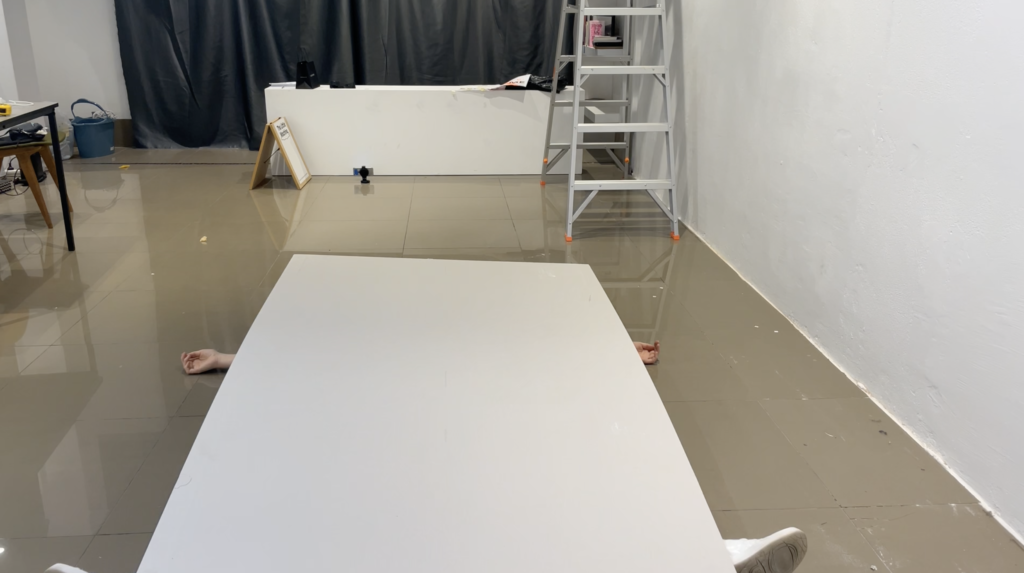
Inneke Taal’s work is Instructions for 12 Days of Improvisation. These instructions require twelve actions to be undertaken with a plasterboard: including shaking the board, positioning oneself underneath it, performing a dance or waltz with it, and banging or drumming one’s head against it. These performances are physically demanding – the board is substantial and unwieldy – and the instructions allow that another person may assist the performer where needed. At the opening, one of these performances – dancing or waltzing – will happen live. All the actions are performed in the gallery space and are recorded and screened as part of the exhibition. In each of these, the curator becomes as much an element of the artwork as the plasterboard. Indeed, the curator is physically tested in ways that are, variously, humorous, whimsical, and antagonistic, and that reflect the attitude of Taal’s broader performative and object-based practice.
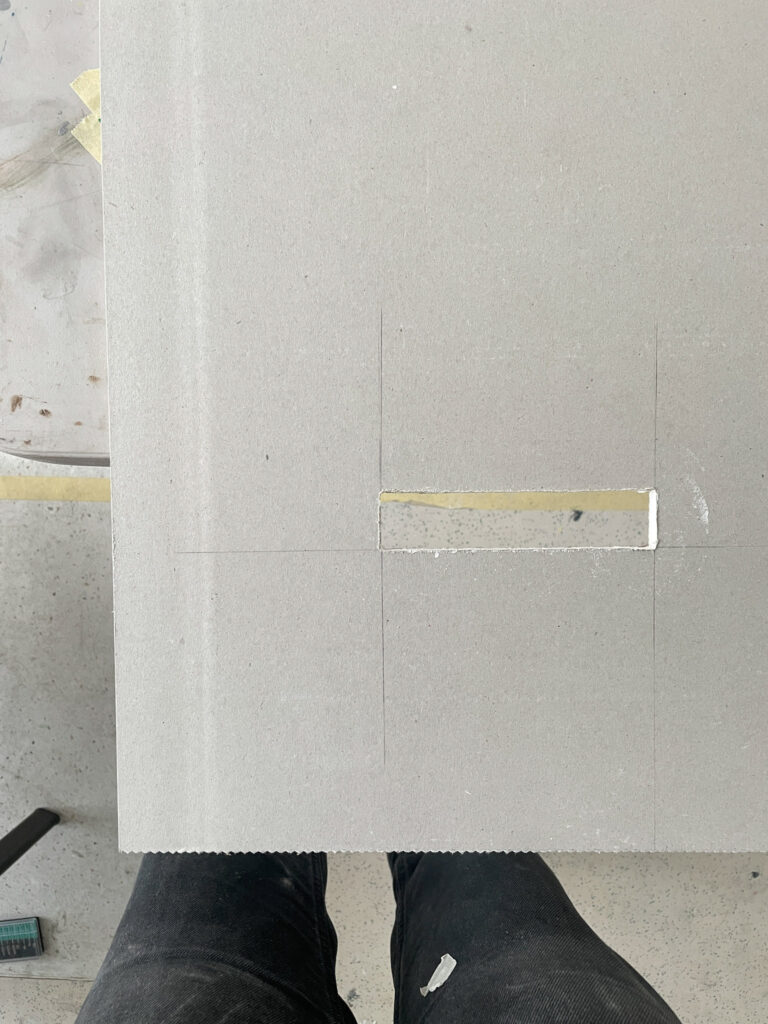
Geert Vercaemer sends his instructions, in Dutch, for an elegant and simple work. Eleen is to excise a small horizontal rectangle of 150x27mm from the lower left corner of the plasterboard panel. Removed, this rectangle is then sliced horizontally into three layers. Each layer is rotated along its long axis by 90 degrees, so its face is now turned upwards or downwards, and the three layers are reinserted, in this new orientation, back into plasterboard panel. Vercaemer has experimented with plasterboard himself to refine his instructions, and ensures that the process he prescribes works perfectly, sourcing a similar Belgian product to Gyprock for this purpose. These actions remain legible in the plasterboard panel, while leaving it almost unchanged physically. The instructions are also presented in a way that requires almost no interpretation on the part of the fabricator. But the simplicity of the process gives the actions a warm and meditative character, and there is also a dry humour in the self-effacing outcome of the work.
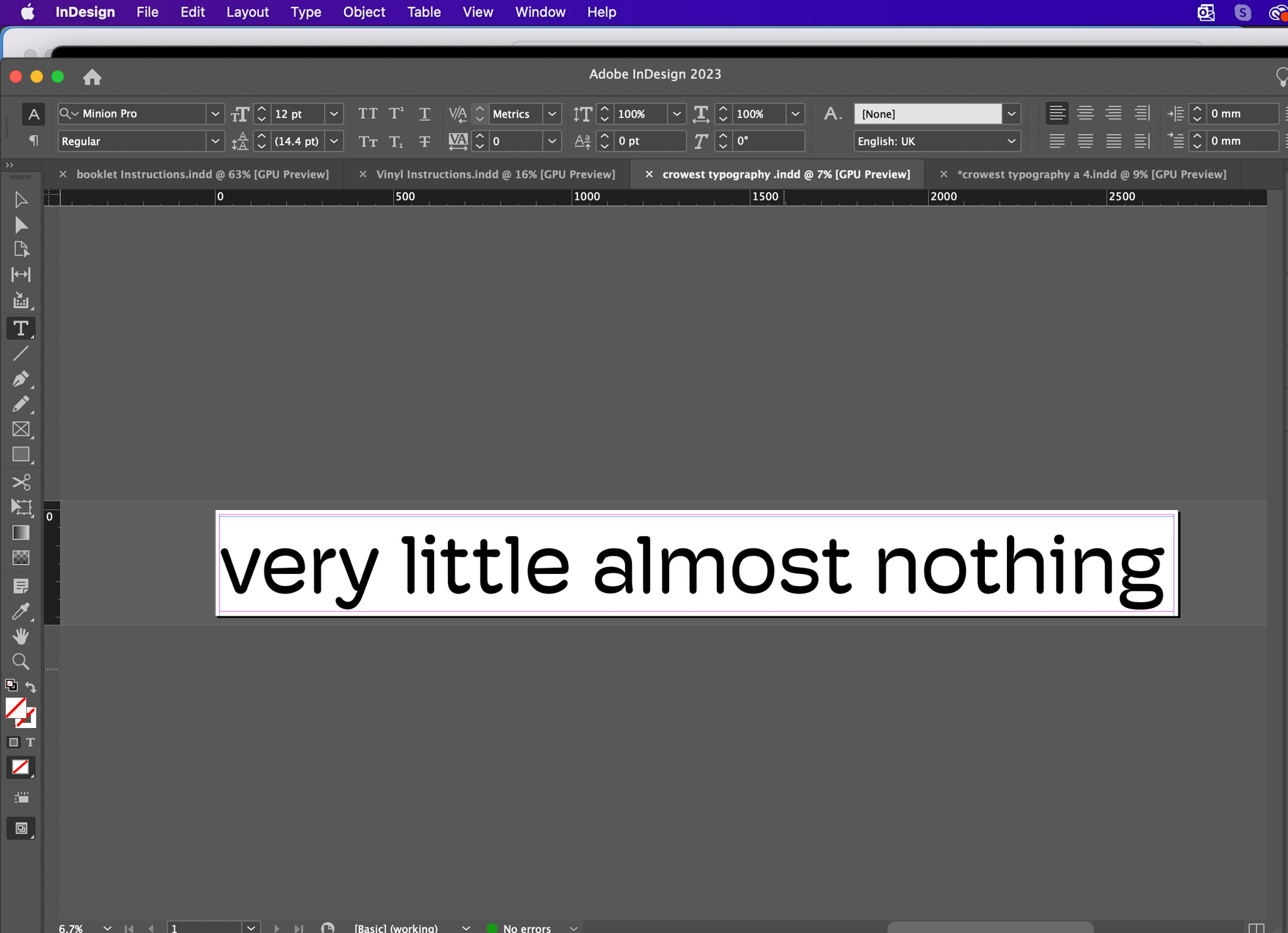
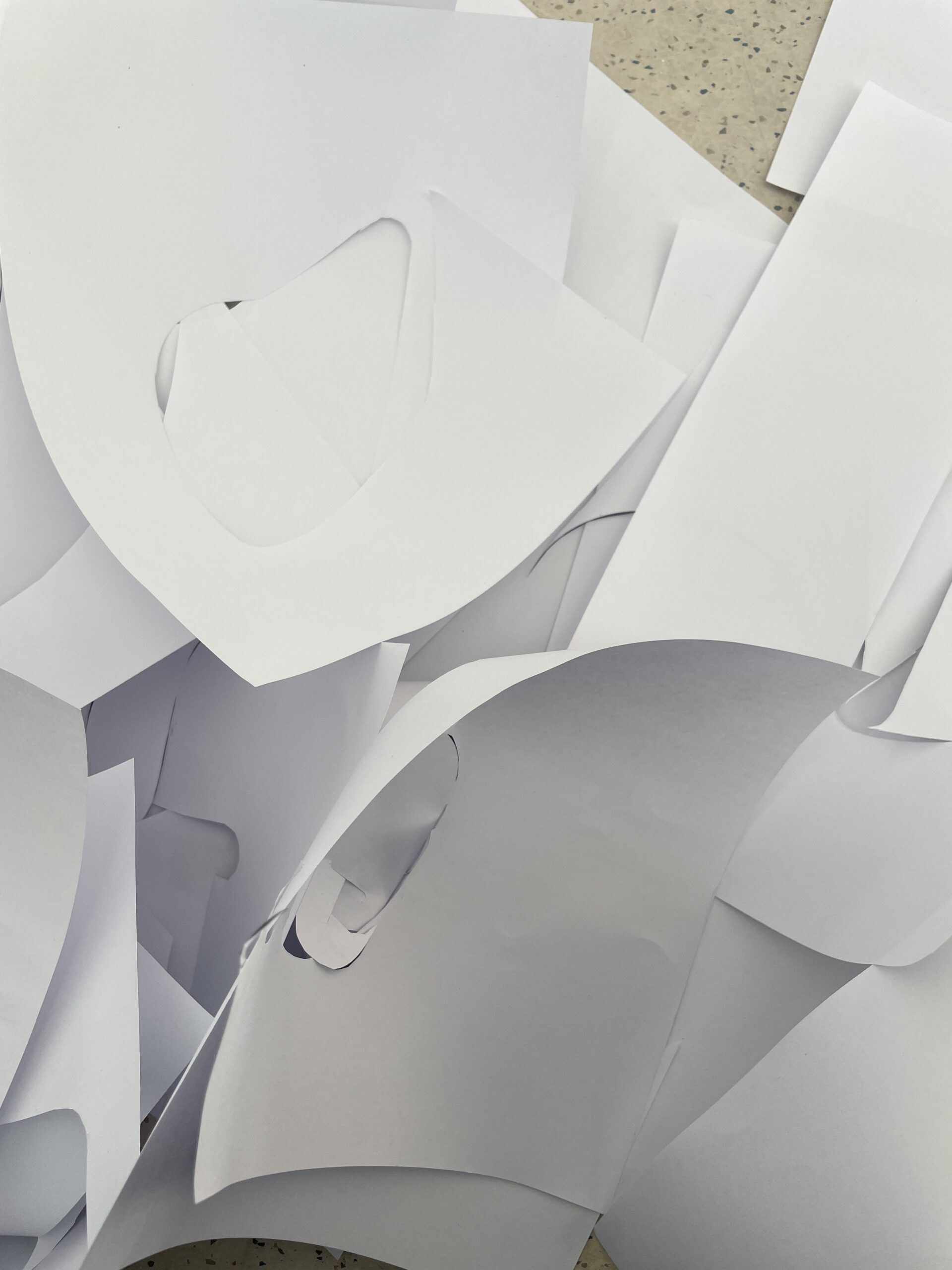
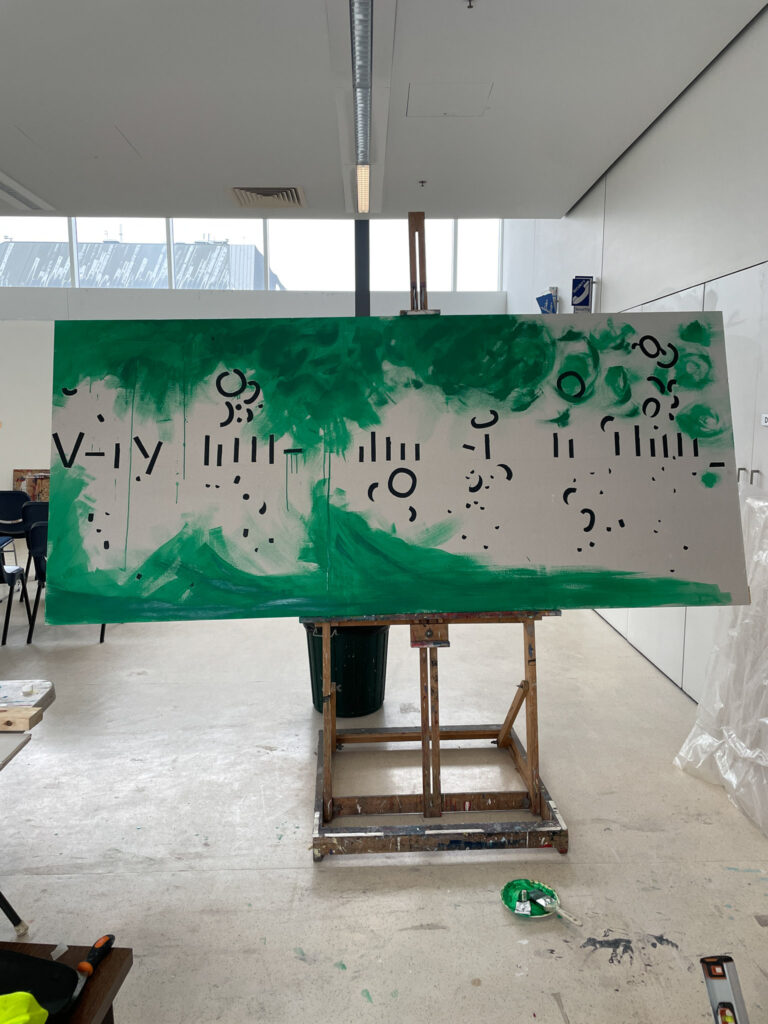
Sarah crowEST’s work is titled a formal exercise in disrupted typography (or a painting of the weather. Eleen is to print the words “very little, almost nothing”, fixing them to the plasterboard. The curved sections of the letters are then to be cut away and arranged elsewhere on the panel, while “think[ing] of stormy weather”. Here, accordingly, they seem to blow like autumn leaves across the panel. The fabricator is then to ask themselves “what does this picture want” and “mark the surface with vigour”. The panel we see here wanted scumbled and dribbling green paint flowing around and vignetting the fractured typography. As Eleen made the exhibited version of this work, crowEST made her own, smaller version. Of all the instructions provided for this exhibition, crowEST’s are most congenial: they have a playful nature, and gift the maker a similarly vital, pleasurable autonomy. This is also a feature of her recent work more generally, which has developed a powerful array of strategies for drawing the viewer into playful, pleasurable and meaningful interactions with the ordinarily austere forms of the modernist avant-garde
In Kelly Schacht’s Imprints like Blue Notes, an upper corner of a vertically placed panel has its paper covering delicately removed, exposing the white plaster beneath. The words “imprints like blue notes” are etched into the plaster surface, in a rounded, sans serif font, the letters of the last two words given a dynamic tilt. The phrase appears again, this time in blue pigment, overlapping the etched letters in a font emulating an elegant cursive script. These interventions show off the qualities of the plaster, the carving making visible its brilliant, brittle surface, and the stains of the blue ink making visible its chalky softness and absorbency. “Blue note” is a jazz term referring to a note played at a pitch at variance with the musical scale. As Marvin Gaye put it, “There’s got to be other notes some place, in some dimension, between the cracks on the piano keys.” Schacht’s blue notes seem to proliferate beneath the Gyprock’s paper, and within the plasterboard itself, suggesting a rich plurality of being, and perhaps even an element of the transcendent, within the mundane. Schacht’s work seems to be an exception to the allographic character of the other works in this exhibition. The artist stipulates that her instructions are not to be carried out by others. Moreover, the template for the etched letters and the carbon paper used to print the cursive text onto the board were given by Schacht to Eleen on her recent trip to Europe and could only be used once in production. Whilst the instructions are there for anyone to see, without the template one cannot accurately follow them. These restrictions connect with another idea related to conceptual art, namely that of the artist’s sanction.3 Philosopher Sherri Irvin draws attention to the fact that an artist can refuse to sanction the reproduction of an artwork that would otherwise be allographic.
That is what Schacht has does here, and it means that unlike the other works in this exhibition, even if her instructions were to be followed by someone else, and that person had access to the template, the resultant work would fail to be a genuine instance of Imprints Like Blue Notes.
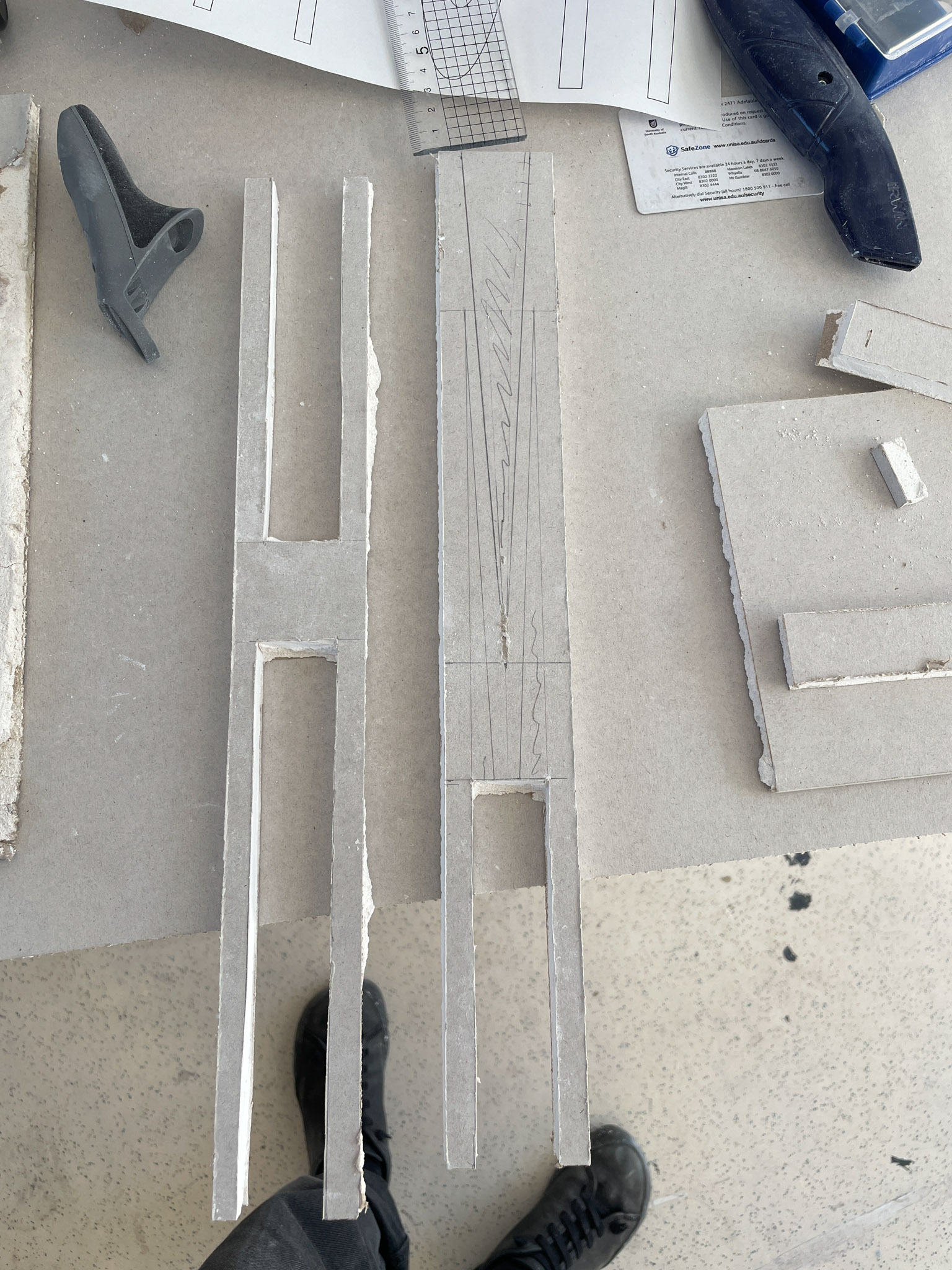

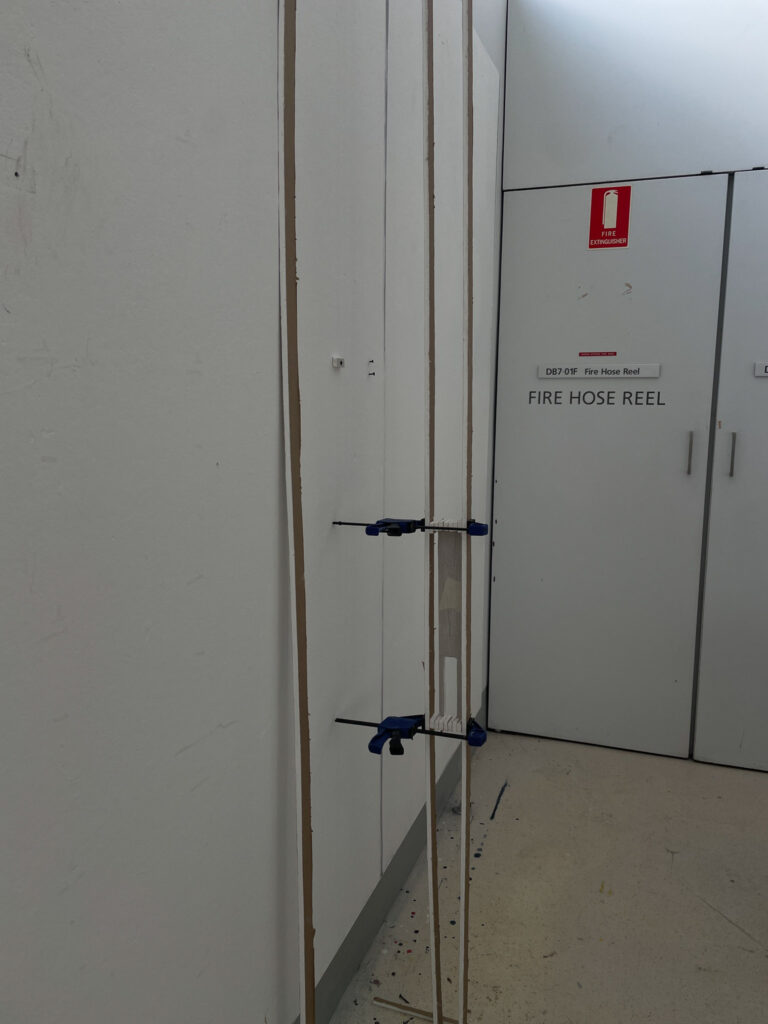
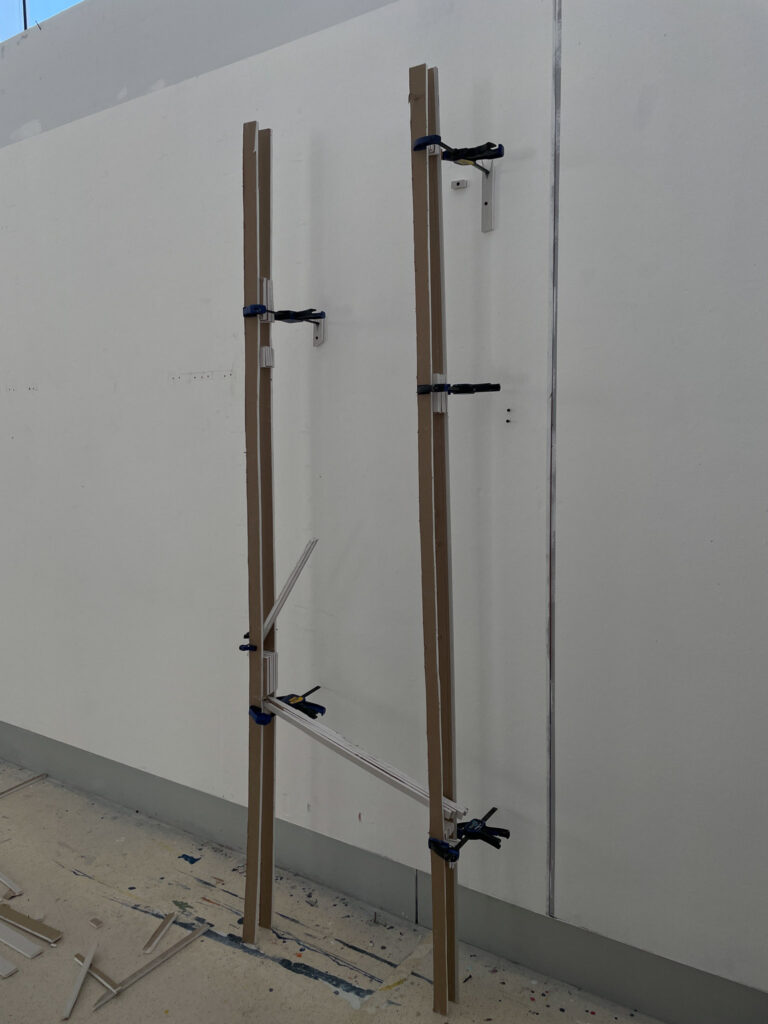
George Popperwell’s work is M. and E. – SHIFT – G. “G.” refers to Popperwell, and “M.” and “E.”, I suppose, to myself and Eleen. The words “HOW” and “WHY” are cut from plasterboard. They are a reference to Joseph Kosuth’s reflection: “What I feel my work introduced – or conceptual art in general – was a shift from ‘how’ to ‘why’.” The two words are to be supported by a framework of scaffolding fashioned from what remains of the plasterboard. “Play” with them, Popperwell’s instructions urge us. I feel slightly bad; in truth Eleen is doing all this work, and she receives assistance not from me, but from Loren Orsillo. Eleen and Loren are both enormously capable fabricators, while my skills in that sphere are notoriously meagre. Still, I feel some guilt about this and worry that Popperwell will be disappointed. Kosuth’s shift from “how” to “why” can be understood as a step back from a formalist idea of art, which can see art as a kind of technical activity developing novel solutions to given, formal problems. In its place he questions the relevance and aptness of those problems. That kind of stepping back, or shift, can be applied to any discipline, or indeed, to anything we do – one might see it as the beginning of a philosophical attitude, which is also, for Kosuth, an artistic attitude. So, “shift” is a process that opens up a conceptual space, a space for thought. A process, by its nature must be in process, that is to say, ongoing, if it is to be at all. So, opening conceptual space in this way – asking “why” – must also be ongoing if it is not to be lost. It must be a permanent process of stepping-back, of reconsidering, and its products will, accordingly, always be provisional, open to revision. This opens a space for agency, and collaboration, and play – important ideas, I feel, for Popperwell. It also makes that play serious, for what is at stake is one’s agency. If one falls into repetition, if one becomes absorbed by technical problems, if one stops asking “why”, then one’s actions become mechanical, determined by the system in which one operates – and one’s agency has been lost. That, to my mind at least, seems to be the challenge that Popperwell sets both himself and those who collaborate with him in realising this work.
Michael Newall, August 2023
Notes
1. Louis Kaplan, ‘The Telephone Paintings: Hanging Up Moholy’, Leonardo 26(2), 1993, pp. 165–68.
2. Nelson Goodman, Languages of Art: An Approach to a Theory of Symbols, Indianapolis: Bobbs-Merrill Co., 1968.
3. Sherri Irvin, ‘The Artist’s Sanction in Contemporary Art’, Journal of Aesthetics and Art Criticism 63(4), 2005, pp. 315–26.